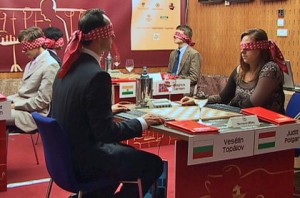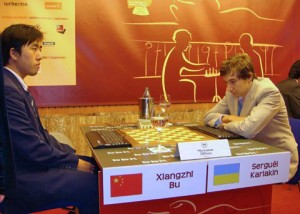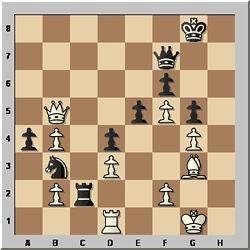With Errol Tiwari
It was an unusual chess tournament that was held in November 2007 in the Basque city of Bilbao, Spain. It was designated the Blindfold Chess World Cup, and six of the world’s finest blindfold experts were invited to participate.

The current phenomenon of chess, Norway’s prodigy and teenager Magnus Carlsen was making a case for all young people everywhere. Over one million of his fans, mostly teenagers, were rooting for him to win the tournament. Carlsen is currently ranked No. 2 in the world behind world champion Vishy Anand.
Another prodigy, the Ukraine’s Sergey Karjakin, was there. At the time, Karjakin held the record for being the youngest person ever to qualify for the prestigious title of ‘grandmaster of chess’ at age 13, plus two months. Finally, there was Pentala Harikrishna from India, who had to defend Indian nationalism and the colourful history of the game which was invented in his homeland thousands of years ago.
The time control was 25 minutes per player for the entire game, plus a 10 second increment per move. Players were not allowed to offer or accept draws among themselves. Only the arbiter could decide whether a game was drawn, and a positive decision was only possible for one of the following three reasons:
1. A threefold repetition
2. Perpetual check
3. Positions which were theoretically drawn

Polgar v Topalov
While most of the games of the Blindfold Chess World Cup were quite interesting, there were a few that ended in herculean blunders. Some players argued that typing their moves on the keyboards distracted them, and were responsible for their blunders. Here are two dramatic examples – blunders you do not actually witness in regular chess.

Blindfold World Cup Bilbao ESP 16.10.2007
1.e4 e5 2.Nf3 Nc6 3.Bb5 a6 4.Ba4 Nf6 5.0-0 b5 6.Bb3 Bc5 7.c3 d6 8.d4 Bb6 9.Be3 0-0 10.Nbd2 h6 11.Re1 Ng4 12.Nf1 Nxe3 13.Nxe3 Rb8 14.Bd5
14…Bg4?? 15.Nxg4 1-0.
Harikrishna v Topalov
Harikrishna, P (2668) – Topalov,V (2769)
Blindfold World Cup Bilbao ESP. 17.10.2007

45…Nc5 46.bxc5 1-0. Harikrishna takes the Knight and Topalov resigns!




